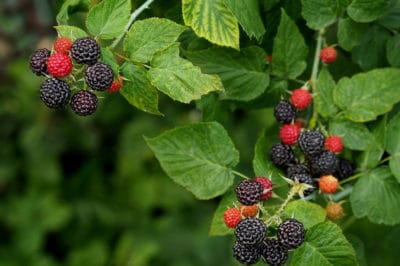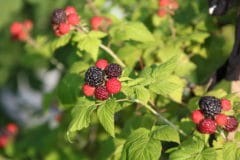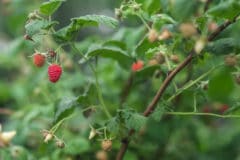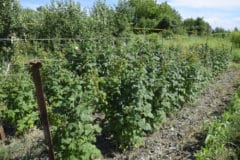Best Reason to Grow Black Raspberries
Recent research has revealed that black raspberries contain 11% more antioxidants than blueberries and 40% more than strawberries. Black raspberries contain anthocyanins, ellagic, coumaric acid, ferulic acid, calcium, vitamin A, vitamin C, vitamin E, and folic acid. These black raspberry antioxidants are believed to prevent many cancers.
Varieties of Black Raspberries
Black raspberries are native to the Mid-Atlantic region of North America. Wild black raspberries are referred to as black caps, thimbleberries or blackcap raspberries. Some people still use these names for cultivars available today. Black raspberry cultivars can be grown in USDA Zones 4-8. When choosing the cultivar appropriate for your region, consider these varieties:
- Blackhawk
- Bristol
- Allen
- Jewel
- Munger
- Black Knight
- Dungee
- Huron
- Cumberland
- Black Gem
- Haut
- Niwot
Black Raspberry Growing Habits
The deciduous black raspberry bush grows branched canes usually 4-6 feet tall in the first year after planting. Erect canes eventually arch sideways and downward. If not trellised, their tips may reach the ground.
Unlike most raspberries, black raspberries do not propagate by runners. New primocanes develop on crown buds at the base of the floricanes (two-year-old canes). The base is sometimes called a clump or a hill. Clumps or hills remain at the same position for the life of the bush, producing new primocanes year after year.
Best Location for Black Raspberries
Black raspberries should never be planted within 75-100 feet of red, yellow, or purple raspberries. Aphid spread viral diseases sometimes attack the more susceptible black raspberry bushes. A disease can also be spread to black raspberries from wild raspberries or blackberries. Some experts suggest a 300 feet distance between them: other experts suggest a 600 feet distance.
Black raspberries have the same basic needs of other raspberry varieties. The black raspberry planting site should receive at least four to five hours of direct sunlight per day. Some partial shade in hotter climates is beneficial. The soil should be fertile and well-drained.
Spacing Between Bushes
Planting one plant is possible because black raspberry bushes are self-pollinating. Black raspberries are the perfect fruit to grow in an edible landscape. Both winter and summer these bushes are beautiful and do not grow more than 4 feet tall if they are pruned correctly. They do not sprawl out by runners so taming them is easy.
Most gardeners want to plant more than one plant. If planting in a traditional hedgerow, space black raspberry plants 3 feet apart. Rows should be about 9 feet apart.












